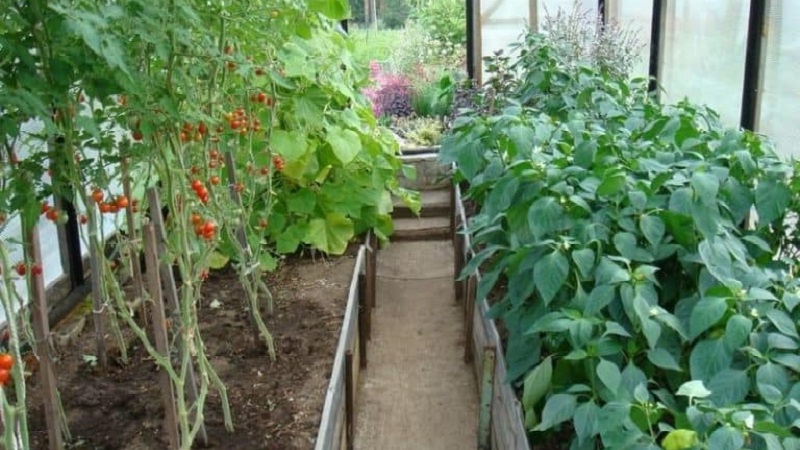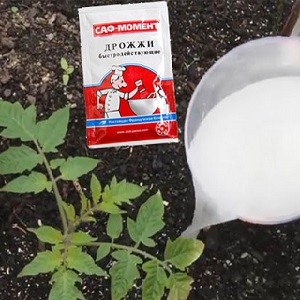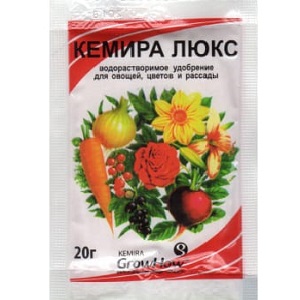How, when and what to feed the seedlings of peppers and tomatoes for a rich harvest
Vegetables need not only comfortable conditions for growth, but also food. Immunity, productivity, ripening rate and fruit quality depend on the completeness of the diet and the timeliness of fertilizing. It is better to organize proper nutrition for the plant from young roots.
How and what to feed the seedlings of peppers and tomatoes, what substances are required at different stages of "maturation" - we will tell in this article.
The content of the article
What feeding for seedlings of tomatoes and peppers gives
The soil does not always contain all the necessary trace elements and nutrients for proper nutrition of seedlings. Therefore, this deficiency is compensated for from the outside. Fertilizers also help increase yields., improve the taste of fruits, resist pathogenic bacteria and fungi.

Timing and frequency of feeding
As soon as the peppers have two leaves, start feeding... Then they continue to fertilize every 7-10 days, and so on until the very transplant into open ground. Before picking seedlings, the soil is "filled" with organic and mineral fertilizers.
The next feeding will be 1-2 weeks after planting. - depending on the adaptation of young bushes. The better they develop, the sooner it is worth re-feeding them.
Next stage - period of active growth of bushes... Then fertilizer is applied three more times: during flowering, during fruit setting and in the active stage of fruiting. Two weeks before harvesting, stop any feeding.
Important! Feed the plants at least once a month and remember that each phase of development requires different elements, so one type of fertilizer is not enough.
How to feed peppers and tomato seedlings
Let's consider in more detail the existing types of dressings.
Folk remedies
A widespread and beloved type of dressing is folk fertilizers. Them easy to make at home:
 Yeast... Ideal for feeding seedlings. Yeast makes the root system more powerful, tends to retain moisture in the soil. Therefore, you can not be afraid if you forgot to water the plants. Seedlings will quickly take root in the garden and grow, since yeast is a powerful growth stimulant. Use both fresh and dry yeast. We dilute fresh ones in a ratio of 200 g per 3 liters of water and leave for 3 hours. Then we dilute one part of such a concentrate with 10 parts of water and immediately add it to the soil. Dry yeast: dilute two sachets in a bucket of warm water, adding 0.3 tbsp. l. Sahara. We insist 3 hours. Before applying to the soil, we dilute in a ratio of 1: 5.
Yeast... Ideal for feeding seedlings. Yeast makes the root system more powerful, tends to retain moisture in the soil. Therefore, you can not be afraid if you forgot to water the plants. Seedlings will quickly take root in the garden and grow, since yeast is a powerful growth stimulant. Use both fresh and dry yeast. We dilute fresh ones in a ratio of 200 g per 3 liters of water and leave for 3 hours. Then we dilute one part of such a concentrate with 10 parts of water and immediately add it to the soil. Dry yeast: dilute two sachets in a bucket of warm water, adding 0.3 tbsp. l. Sahara. We insist 3 hours. Before applying to the soil, we dilute in a ratio of 1: 5.- Iodine... This readily available fertilizer will not only speed up fruit ripening, but also increase yields. Also feeding with iodine will help in the fight against the development of fungal diseases of the plant. It is simple to prepare the solution: we dilute 2 drops of iodine in 1 liter of water. You can water the seedlings immediately.
- Coffee grounds suitable for enriching the soil with nitrogen and other trace elements before sowing seeds. Just mix it with soil.
- Banana peel... It contains potassium, which is required at almost all stages of the growth of tomatoes and peppers. The peel is simply buried in the holes, or an infusion is prepared: for 3 liters of water, take a peel from 2-3 bananas and insist for 3 days.
- Ash... Ash has a high content of trace elements, it improves the taste of the fruit. Use it dry, pouring it into the holes, or prepare an infusion (a glass of ash on a bucket of water).It is important that the ash is from pure wood that has not been painted.
- Bird droppings... 1.5 kg are bred in a bucket of water and infused for 5 days. Then you can add potassium permanganate to the solution.
- Eggshell used when diving seedlings. They put it on the bottom of the pots, like drainage, or make an infusion: they take half a bucket of shells on a bucket of water and insist for 3 days.
- Onion peel... Useful in pest control. It is used both in the form of an infusion (for 1 liter of water 10 g of husk, leave for 5 days), and in dry form (bury in the soil or spread out under the bushes).
It can be useful:
How to feed tomatoes with boric acid, iodine and ash
Purchased fertilizers
Ready-made mineral fertilizers are available in any specialized store. Here are some proven remedies:
- "Ideal"... It contains nitrogen, potassium, phosphorus, calcium, humic acids (easily assimilated compounds of trace elements). They are mainly used on acidic and slightly acidic soils. "Ideal" accelerates the growth of green mass, increases soil fertility, protects plants from diseases and increases their immunity.
 "Kemira-Lux"... Suitable for fertilizing at the fruiting stage. The composition is dominated by potassium - the main element for the development and ripening of fruits.
"Kemira-Lux"... Suitable for fertilizing at the fruiting stage. The composition is dominated by potassium - the main element for the development and ripening of fruits.- Orton Micro-Fe... In the composition of such microelements as iron, boron, zinc, manganese, etc. They are used for spraying bushes at an early stage. Protects against fungal diseases, enhances photosynthesis.
- Mixture "GUMI Kuznetsova"... Designed for spraying and watering seedlings. The composition is dominated by humates (60%), the rest are micro- and macroelements. Accelerates the growth of green mass, strengthens the root system, makes the bushes thicker, stronger, resistant to diseases.
- "Kristalon"... It contains the main trio of elements - nitrogen, phosphorus and potassium, as well as sulfur, copper, molybdenum, boron. An important nuance is the absence of chlorine in the composition, which makes the drug more natural and safe. There are several types of "Kristalon" for each stage of plant development.
Check out the purpose and composition on the package and follow the instructions.
In what period what feeding to use
Top dressing is alternated to get the best yield... Let's figure out which of the above to add to the soil during what period.
At the beginning of seedling growth and until planting in open ground or greenhouses Peppers and tomatoes need three essential elements: phosphorus (P), nitrogen (N) and potassium (K). They help seedlings to take root and develop faster. For this period, ready-mix NKP is suitable.
During flowering and fruit setting, the bushes need potassium and phosphorus., but it is better to give up nitrogen - it's time to use organic feeding.
At the stage of fruiting, the last feeding is carried outto speed up the ripening and improve the taste of vegetables. Required elements: boron, manganese, potassium and iodine.

How to fertilize correctly
If you do not follow certain conditions of fertilization, you can get the opposite result.... For example, a bush will develop well, but at the same time give all its strength to the greens, and the fruits will not ripen.
To avoid this, follow the rules:
- When feeding seedlings, make sure that the fertilizer does not fall on the leaves. Try to fertilize the plant at the root. In case of contact with leaves, rinse them with water.
- In the period between fertilizing, the earth is loosened.
- The soil is moistened before fertilization.
- Ready solutions are slightly warmed up to a warm state before making.
- It is best to fertilize the soil in the morning so that the soil remains dry at night. Otherwise, fungal diseases may develop.
Read also:
Why process tomatoes with brilliant green and iodine
How to feed pepper in the open field for growth and thickness
Tips from experienced growers
A few simple tips from practitioners to help you reap a rich harvest:
- Peppers don't like fresh cow dung, so don't overdo it when preparing your beds.
- After preparing the eggshell solution, place it next to the seedlings to infuse. This will also have a beneficial effect on the maturation of the bushes.
- If the leaves of the peppers are curled, this indicates a lack of potassium in the soil.
- It is better to underfeed the bushes a little than to overfeed. Excess fertilizer can only harm.
Conclusion
Treat growing and feeding peppers and tomatoes with love. Keep an eye on the seedlings and bushes at each stage, and they themselves will tell you how to proceed.
If the seedlings are strong, green, the fruits are beautiful, plump and without damage, then there are enough nutrients in the soil and there is no need to feed them. If you don't like something about the appearance of plants, read our article and follow the tips. And then, even without experience, you will grow a large harvest of healthy and tasty vegetables.